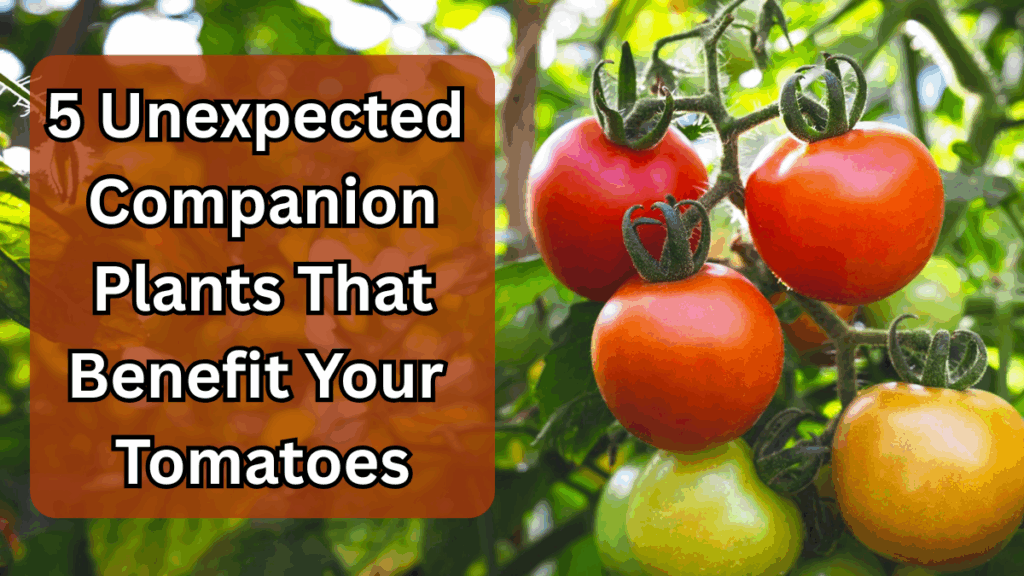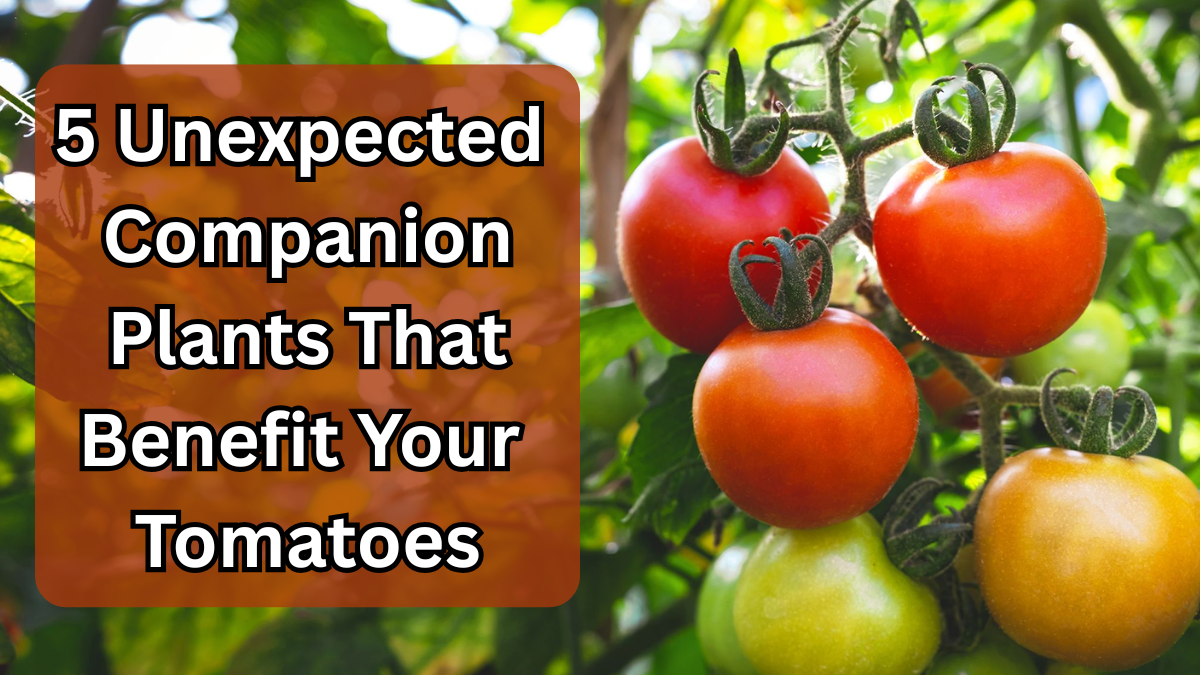If you’ve ever tended a tomato garden, you know the challenges: pesky garden pests, nutrient-hungry soil, and the constant struggle to keep your plants thriving. One of the most effective ways to boost your tomato harvest is through companion planting. While some companion plants are obvious, like basil or marigolds, there are a few unexpected allies that can make a real difference.
Here’s a closer look at five surprising tomato companion plants that improve plant synergy and help your tomatoes flourish.

Carrots: Deep Root Power
Carrots are more than just a tasty addition to your kitchen—they’re fantastic companions for tomatoes.
Benefits for tomatoes:
-
Loosen soil, allowing tomato roots to grow more freely
-
Improve soil aeration and nutrient distribution
-
Reduce competition for nutrients since carrots grow deep while tomatoes spread wide
Tips for planting:
-
Sow carrot seeds around the base of your tomato plants
-
Ensure adequate spacing to prevent crowding
Borage: Attract Beneficial Insects
Borage is a herb you might not associate with tomato gardening, but it’s a superstar when it comes to plant synergy.
Benefits for tomatoes:
-
Attracts pollinators like bees, improving fruit set
-
Repels tomato hornworms and other garden pests
-
Adds trace minerals to the soil when leaves decompose
Planting advice:
-
Plant borage near the edges of your tomato beds
-
Allow it to self-seed for natural renewal each year
Nasturtiums: The Pest Magnet
Nasturtiums aren’t just colorful—they serve as living pest traps.
Benefits for tomatoes:
-
Draw aphids, whiteflies, and other garden pests away from tomatoes
-
Can improve the flavor of nearby tomato fruits
-
Grow well in partial shade, complementing tomato plants
How to use:
-
Plant along tomato rows or in corners of your tomato garden
-
Regularly trim to encourage flowering and growth
Garlic: Natural Pest Deterrent
Garlic may not be the first plant you think of for your tomato garden, but its natural chemical compounds can be highly beneficial.
Benefits for tomatoes:
-
Repels aphids, spider mites, and other common garden pests
-
Supports overall plant health and reduces fungal issues
-
Can be harvested alongside your tomatoes for added culinary benefits
Planting tips:
-
Plant garlic cloves around the perimeter of your tomato bed
-
Ensure good air circulation to prevent overcrowding
Parsley: Hidden Growth Booster
Parsley is a subtle but effective companion for tomatoes.
Benefits for tomatoes:
-
Attracts predatory insects like ladybugs and hoverflies
-
Improves tomato plant growth through enhanced plant synergy
-
Can be interplanted without competing for space or nutrients
Growing tips:
-
Plant parsley at the base of tomato plants
-
Keep soil consistently moist to support both plants
Vertical Table: Companion Plant Benefits for Tomatoes
| Companion Plant | Key Benefit | Additional Advantage |
|---|---|---|
| Carrots | Improve root growth | Loosen soil, better nutrient distribution |
| Borage | Attract pollinators | Repels tomato hornworms, enriches soil |
| Nasturtiums | Trap pests | Can enhance tomato flavor |
| Garlic | Natural pest deterrent | Reduces fungal issues |
| Parsley | Attracts predatory insects | Boosts plant synergy, non-competitive |
Tips for Maximizing Tomato Companion Planting
-
Diverse Planting: Mix different companion plants for maximum protection and growth
-
Rotate Crops: Avoid planting tomatoes in the same spot each year to reduce disease
-
Monitor Pests: Even with companion plants, inspect your tomato garden regularly for signs of trouble
-
Soil Health: Enrich soil with compost or mulch to complement companion planting
FAQs About Tomato Companion Plants
Q1: Can I plant all these companions in the same tomato garden?
Yes! Most of these plants have complementary growth habits and can coexist without competing for nutrients, creating excellent plant synergy.
Q2: Will companion plants affect the taste of my tomatoes?
Some, like nasturtiums, may enhance flavor indirectly by reducing pest damage and improving plant health.
Q3: How do companion plants help with garden pests?
They either repel harmful insects (garlic, borage), attract beneficial predators (parsley), or serve as decoys to lure pests away from tomatoes (nasturtiums).
Q4: Can these companion plants be grown in containers with tomatoes?
Absolutely. Many tomato companion plants adapt well to container gardening, making them perfect for smaller tomato gardens or balcony setups.
Click here to learn more
